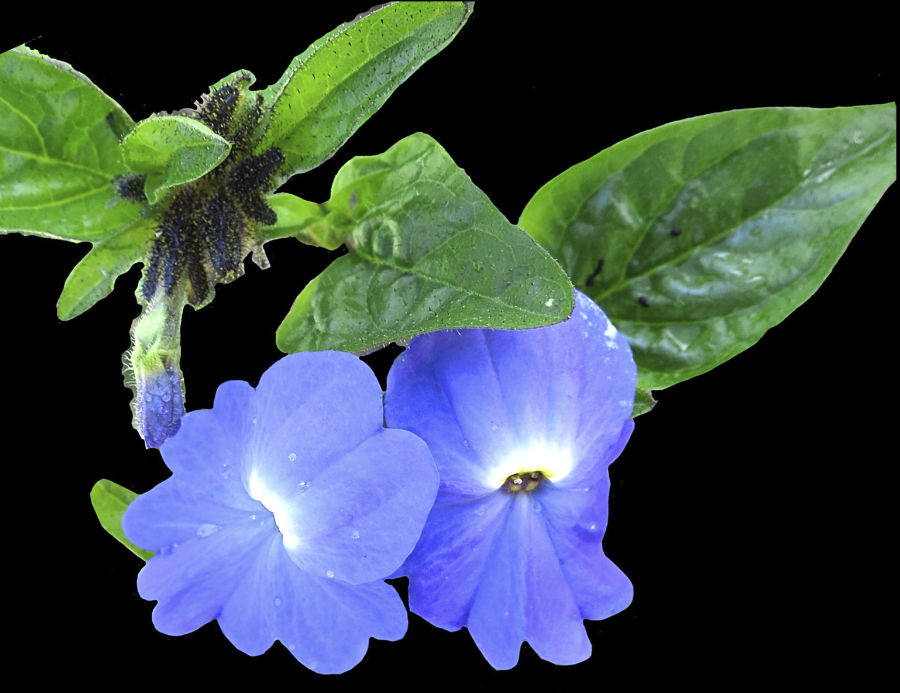Browallia.
Plants of the World Online (Kew) accepts 24 species while others say 2 to 6.
Native to Central and South America one species is naturalised in Australia.
The annual or perennial shrubs are typically 60 to 70 cm high but can scramble up to 1 m.
Branches may have simple and glandular hairs.
The ovate alternately arranged leaves are up to 6 cm long.
The blade may run down the petiole.
Axillary inflorescences are a solitary flower or a small cluster.
The pedicels lengthen as the fruit develop.
The calyx tube has 4 or 5 short lobes with a pointed or rounded tip.
The outer surface has simple and glandular hairs.
The funnel-shaped corolla has 4 or 5 wide, blunt lobes on a tubular base.
The upper section of the greenish tube may be swollen but the throat is narrow.
The outer surface has short hairs with or without glands, the inside has none.
The corolla is white, blue or mauve.
There are 4 stamens in 2 pairs of different lengths.
Occasionally there is a 5th stamen or a staminode (sterile stamen).
The pairs are inserted just above and below the swollen part of the corolla tube.
The short upper pair have flattened and curved filaments with hairs and usually only 1 pollen sac.
The longer filaments of the lower pair have a sharp bend and dense hairs at the top.
The basifixed anthers open through longitudinal slits.
Any nectary disc is usually small.
The ovoid ovary, sometimes on a sort stalk has hairs on the top.
It has 2 locules with numerous ovules on a large placenta.
The upper part of the style becomes wider and is wrinkled.
The wide stigma has 1 lobe or 2 shallow to deep lobes.
The smooth ovoid septicidal capsules have the calyx around them.
They open from the top with each chamber having 2 valves.
There are many tiny seeds.
J.F.


